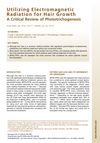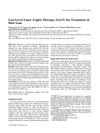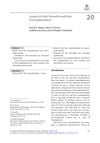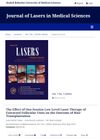Low-Level Laser and Light Therapy
June 2011
in “
CRC Press eBooks
”
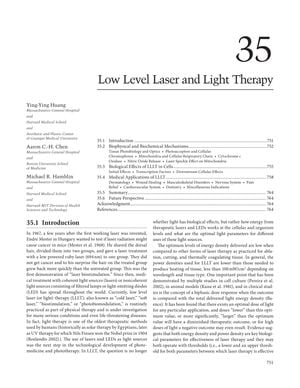
TLDR Low-Level Laser Therapy can stimulate healing and cell function, potentially leading to wider medical use.
The document from June 7, 2011, provides a comprehensive overview of Low-Level Laser (or Light) Therapy (LLLT), detailing its mechanisms, biological effects, and various medical applications. It explains that LLLT operates at low energy densities to stimulate cellular processes without heating tissue, with mitochondria being a primary target. The therapy is shown to increase ATP production, enhance cell proliferation, migration, and collagen synthesis, and have anti-inflammatory effects. Clinically, LLLT has been used to stimulate hair regrowth, with a trial showing an 85% increase in hair density in the active group, and has applications in dermatology, wound healing, musculoskeletal disorders, and the nervous system. Studies have demonstrated LLLT's effectiveness in nerve repair, pain relief, and reducing postoperative pain in dental surgery. Despite some controversial applications, the document suggests that LLLT's benefits are linked to the release of nitric oxide, which improves cellular respiration and various healing processes. The document concludes that a deeper understanding of LLLT could lead to broader acceptance and use in treating serious conditions.

